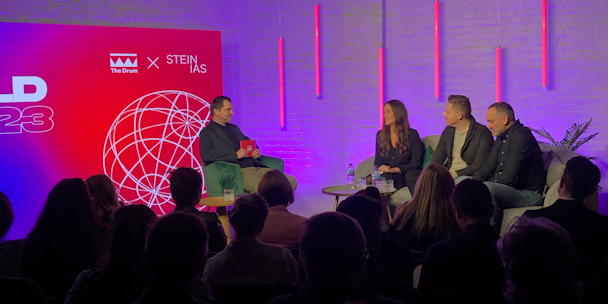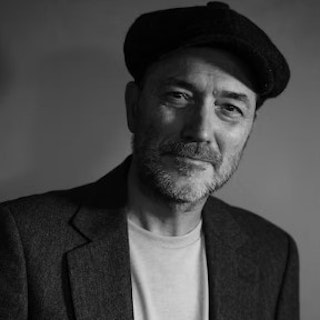Lessons from LinkedIn and the London Stock Exchange on creativity in B2B marketing
Executives from the two businesses took to the stage at The Drum’s B2B World Fest to share how they’ve prioritized creativity in their marketing departments.

LinkedIn shares insights at The Drum B2B World Fest
In the ever-evolving landscape of B2B marketing, a paradigm shift is underway. The days of dry, product-centric campaigns seem to be fading into the annals of history.
Instead, a new era of storytelling and emotive, purpose-driven marketing is taking center stage. This transformation is evident in the words of industry leaders who have recognized the power of creativity as a key driver of success.
At The Drum’s B2B World Fest, we delved into this shift, analyzing the insights from a LinkedIn representative and LSEG (London Stock Exchange Group) campaign and how it exemplifies the growing importance of creativity in B2B marketing.
Advertisement
A shift towards storytelling and purpose-driven campaigns
One of the most prominent voices in the realm of B2B marketing is the LinkedIn B2B Institute. It’s been actively studying the effectiveness of creativity in B2B marketing. Its research reveals a shift in the industry from mere product-centric campaigns to those that embrace storytelling and purpose. Keith Browning, director of brand marketing at LinkedIn, highlighted this shift.
LinkedIn recognizes that creativity has the power to convey complex B2B offerings in a compelling and emotionally resonant way. By aligning with a purpose, companies can create narratives that engage and connect with their audience on a deeper level.
The importance of creativity in B2B marketing
This shift in B2B marketing is significant for several reasons. Historically, B2B marketing has been largely performance-driven, focusing on providing immediate ROI. Short-term objectives dominated the landscape, driven by the pressure of short CFO tenures and CMOs eager to demonstrate their immediate value to shareholders.
Marc Keating, chief innovation officer at Stein IAS, acknowledges this focus on performance marketing: “In the short term, we had Covid holding pipeline from brands and had to show a return. CMOs took a short-term view, delivering immediate returns to the business and shareholders.”
However, the pendulum is starting to swing in the other direction. B2B marketers realize the value of a more balanced approach, recognizing that long-term investment in brand and creativity can yield substantial returns. For this shift to be successful, it necessitates a change in the culture and attitude of the entire marketing department and the company as a whole.
This cultural shift should be supported by the board and embrace innovation and data analysis. In a world where creativity meets innovation, emotionally rich experiences emerge, driving better performance and effectiveness. This transformation has led to the emergence of award-winning B2B campaigns that focus on the utility of the product or service, connecting with the audience and providing real value.
Advertisement
Evidence of the power of creativity in B2B marketing
The LinkedIn B2B Institute’s research and insights reflect the changing landscape of B2B marketing. The concept of “creativity commitment” emphasizes that campaigns become more effective as you commit to creativity over the long term, focusing on three key elements:
- Time in market: the longer a campaign runs, the more effective it becomes.
- Budget: adequate budget allocation is essential for campaign success.
- Media channels: a diverse range of channels increases advertising effectiveness.
LinkedIn has developed a creative platform that embodies these principles. By creating emotionally rich content, the platform’s campaigns aim to connect with audiences on a profound level.
LSEG’s rebranding journey
The LSEG’s recent rebranding initiative showcases the power of creativity in B2B marketing. With its acquisition of Refinitiv, the company recognized the need for a significant brand transformation. The three main pillars of its transformation included simplifying brand architecture, an extensive rebranding effort, and repositioning the LSEG in the market.
Amie Stankiste, chief marketing officer at the LSEG, emphasized the challenges it faced in championing this transformation. It required a change in the company’s culture, strong support from the CEO, and the injection of creativity into the brand that had not been seen before.
With perseverance and an internal launch that galvanized employees and made them brand champions, LSEG achieved remarkable results, including the viral success of its campaign video. The journey from risk aversion to bold creativity led to a groundbreaking rebranding campaign that positioned LSEG as a forward-thinking and impactful brand.
Suggested newsletters for you
LinkedIn’s creative evolution
By focusing on its professional audience and offering unique targeting capabilities, LinkedIn stands out from competitors. The campaign, ‘No one knows what you do,’ humorously addresses the challenge of explaining B2B professions to non-professionals.
LinkedIn’s Browning detailed the company’s journey toward creative excellence, acknowledging the initial challenges of securing a creative budget and promoting the value of creativity within the organization.
However, it has now reached a point where investment in creativity, a sophisticated platform, and a robust measurement system has allowed it to break through the B2B marketing landscape effectively.
Balancing brand and demand
While there is no one-size-fits-all approach to balancing brand and demand investment in B2B marketing, a shift is undoubtedly underway. The data provided by the LinkedIn B2B Institute suggests that the 50/50 split between brand and demand marketing is a common benchmark.
However, the exact allocation depends on various factors, including the company’s life cycle, growth strategy, and competitive landscape.
By embracing storytelling, purpose-driven campaigns, and a commitment to creativity over the long term, B2B brands can engage their audience on a deeper level.
The rebranding journey of LSEG and LinkedIn’s approach illustrates the transformation that is taking place in the B2B marketing world, emphasizing that creativity is an essential component in driving success in the ever-changing landscape of business-to-business marketing.

